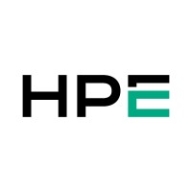

IBM FlashSystem and HPE StoreEasy compete in the enterprise storage category. IBM FlashSystem has the edge in performance, while HPE StoreEasy is more competitive in pricing.
Features: IBM FlashSystem offers high performance, low latency, and virtualization capabilities, making it a robust choice for businesses seeking advanced storage solutions. Its compression technology and high IOPS rates significantly enhance performance for critical applications. HPE StoreEasy is known for its storage reliability, ease of deployment, and compatibility with virtual machines, providing a solid feature set for businesses focused on seamless integration with existing infrastructure.
Room for Improvement: IBM FlashSystem could improve its scalability, replication features, and cost-effectiveness. Users also desire more detailed reporting and better monitoring tools. In contrast, HPE StoreEasy needs to improve technical support, offer better scalability options, and address cloud storage access limitations. Users also report challenges with migrating large datasets and potential compatibility issues.
Ease of Deployment and Customer Service: Both IBM FlashSystem and HPE StoreEasy are mainly deployed on-premises, with IBM having some hybrid cloud capabilities. IBM's customer service enjoys high ratings, though technical support feedback varies. HPE StoreEasy offers strong customer service but requires improvements in its technical support infrastructure to keep up with changing customer needs.
Pricing and ROI: IBM FlashSystem is perceived as a premium choice with higher initial costs but offers robust performance and comprehensive features that lead to strong ROI in performance-critical environments. HPE StoreEasy provides a budget-friendly alternative with lower initial costs, making it appealing to businesses focusing on cost-efficiency and delivering favorable ROI, particularly for SMBs.
| Product | Market Share (%) |
|---|---|
| IBM FlashSystem | 11.0% |
| HPE StoreEasy | 4.3% |
| Other | 84.7% |


| Company Size | Count |
|---|---|
| Small Business | 4 |
| Midsize Enterprise | 3 |
| Large Enterprise | 5 |
| Company Size | Count |
|---|---|
| Small Business | 47 |
| Midsize Enterprise | 22 |
| Large Enterprise | 57 |
IBM FlashSystem products are enterprise computer data storage systems that store data on flash memory chips. Unlike storage systems that use standard solid-state drives, IBM FlashSystem products incorporate custom hardware based on technology from the 2012 acquisition of Texas Memory Systems. This hardware provides performance, reliability, and efficiency benefits versus competitive offerings.
We monitor all NAS reviews to prevent fraudulent reviews and keep review quality high. We do not post reviews by company employees or direct competitors. We validate each review for authenticity via cross-reference with LinkedIn, and personal follow-up with the reviewer when necessary.